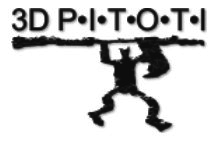The University of Nottingham are co-ordinating the project and contribute research input from two groups: The Human Factors Research Group specialize in design and evaluation of novel 3D interactive technologies for applications in a variety of end-user contexts. The Learning Sciences Research Institute is a centre of excellence for research in learning sciences with expertise in design new technologies to enhance human learning and interaction.
At Graz University of Technology, two partners are involved in the project. The contribution of the Institute for Computer Graphics and Vision (ICG) is the development of a novel intelligent control of MAVs to generate high quality 3D representations of complete rock art sites from 2D images. The contribution of the Institute of Electrical Measurement and Measurement Signal Processing (EMT) is the development of the novel, high-resolution portable 3D scanner at the micro-range.
ArcTron 3D GmbH is an established specialist for complex cultural heritage documentations and software solutions. For 3D-PITOTI, they will carry out the reference scanning, assist and evaluate the new scanner development, assemble and enhance a suitable software toolkit and build up the scientific database with the project archaeologists. As corporate partner, they are designated Dissemination & Exploitation Manager.
The McDonald Institute for Archaeological Research at the University of Cambridge will provide the archaeological expertise with which to guide and support the work of the technical development teams. Digital heritage expertise in 3D film will combine with innovative rock-art fieldwork techniques and rigorous equipment evaluation to ensure the project’s archaeological impact. The world famous architecture of St John’s College Cambridge, will be the venue for the world premiere presentation of 3D Pitoti’s results to an international audience.
The Centro Camuno di Studi Preistorici, established 1964, is a non-profit cultural organization. Its main purpose is the research of prehistoric and primitive art, disseminating research results and contributing to the preservation and appreciation of the cultural heritage. It is also a centre for training students in scholaly research.
The Institute for Creative Media Technologies of the St. Pölten University of Applied Sciences is organized in several groups that undertake application oriented research and development in the broader field of the creative industries. The Media Computing Research Group is working on human computer interaction, game design, software development, media processing, audiovisual retrieval and computer vision.
This project has received funding from the European Union’s Seventh Framework Programme for research, technological development and demonstration under grant agreement no 600545.
In collaboration and by permission of the Ministero dei beni e delle attività cultural e del turismo, Soprintendenza Archeologia della Lombardia.
Copyright © 2015 3D-PITOTI.EU. All Rights Reserved.





